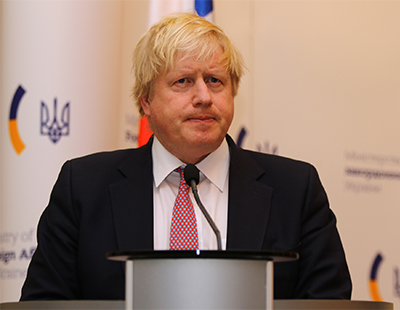Time is up for Boris Johnson's tenure as Prime Minister and leader of the Conservative Party, serving 3 years and 44 days in the top job. It’s safe to say that it’s not been easy sailing for Mr Johnson, who has had to tackle Brexit, a global health pandemic and numerous political scandals that ultimately knocked him off his perch.
Looking back, how did Boris and his cabinet shape the UK market as we see it today and did he leave it in a healthy place for his successor, Liz Truss?
Stamp Duty Holidays and Reacting to Covid-19
One of the first major issues that the Prime Minister and his cabinet had to navigate was the turbulent time during the pandemic and the multiple lockdowns that were imposed on the UK in 2020. Many may argue the Stamp Duty holiday that ran between 2020 and 2021 helped to simulate the property market which ground to a halt for months during the first initial lockdowns, seeing the highest number of transactions since before the 2007 financial crash.
We’ve seen negative impacts from the Stamp Duty holiday however, with increased property prices, a highly competitive market that caused bidding wars which made it harder for homebuyers to obtain the home they wanted. It’s also caused further issues for first time buyers, as house prices rose and reduced the number of affordable homes on offer. Despite record growth in house prices, the market is showing signs of slowing down, falling 0.1% in July 2022 as the UK starts to feel the effects of the ongoing cost of living crisis and higher interest rates for new mortgages.
Building 300,000 Homes a Year Target Slipping Away
Plans to build new homes to tackle the UK housing crisis have also stalled over the last few years, with reports suggesting that that government’s 300,000 target is unlikely to ever be hit, thanks to shortages in workforces, planning permission red tape and increased cost in building materials. Just over 243,000 homes were built in 2019 to 2020, the closest we came to reaching the proposed target. Whilst this does show that 300,000 can be attainable, the government seriously needs to address the barriers that are preventing developers building more homes, so they can hit the target they outlined at the last election and put an end to the ongoing housing crisis.
Rental Reforms Delay Looking Likely
Another major announcement was the Rental Reform White Paper, aimed to transform the UK rental market and provide more security for tenants. Abolishing no-fault evictions (Section 21), reforming Section 8 notices and allowing tenants to keep pets in their properties were the headline policies, as well as tackling unscrupulous landlords who often took advantage of tenants. It did cause concern for landlords however, taking away their ability to reclaim their property quickly if they needed to, as well as having to rely on the court system more to evict troublesome tenants. These rental reforms have been put on the backburner more recently, following the turmoil of the widespread government resignations, including the sacking of Michael Gove as Housing Secretary. It’s looking likely that we’ll see these reforms come into play in 2023.
Thatcher 2.0 and the Right to Buy Scheme
And, in a bid to provide more people the opportunity to buy their own home, Boris recently announced that the Right to Buy Scheme would be reintroduced, allowing people in social housing the opportunity to buy the house they live in. The scheme was first introduced by Margaret Thatcher’s government and although 1.8million homes were sold between 1980 and 2021, take up waned during the 1990s and 2000s. It also contributed to the huge shortage of social housing we’re currently experiencing too, with fewer than 1 in 3 homes replacing the homes bought using the scheme and a reduction of around 200,000 houses since the Tories came into power in 2010.
Liz Truss takes over as Prime Minister
As Boris Johnson steps down as Prime Minister, his legacy in regards to the property market is somewhat of a mixed bag. Whilst we saw plenty of support measures to boost the industry during lockdown, we’ve been left with a volatile property industry made up of issues such as rising housing prices, a shortage of affordable housing and a highly competitive rental market that has driven up prices for tenants. We’re also in the middle of a cost of living crisis that is already causing issues for many households and is set to cause further strains as we move into October.
Now that Liz Truss has taken the reins, we’re likely to see a swift response to the rising cost of living and the energy crisis, after vowing to act within a week of becoming Prime Minister. Millions of households are struggling with rising costs and are at risk of slipping into fuel poverty as we head towards the winter season, therefore emergency measures need to be put in place to help those who need it most.
Looking ahead, Prime Minister Truss should also make the housing crisis a priority and tackle the shortage in homes in the UK. The shortage of rental homes in particular is evidence that the government needs to do more to provide quality housing for renters, rather than focusing most of their attention on homeownership. If 300,000 homes a year isn’t viable, we need to see a more realistic and sustainable target that will relieve the issues surrounding housing stock.
*Adam Male is the Chief Revenue Officer at online lettings agent Mashroom





/LizzTrussPM-400x310.png)


/LizTruss01-400x310.png)
















Join the conversation
Be the first to comment (please use the comment box below)
Please login to comment